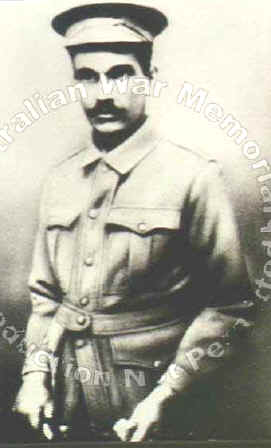 |
| Category:1st AIF/1st
Div/2nd Bde |

|
|
|
|
|
|

- 7th Battalion AIF
(Victoria) [2nd Infantry Brigade]
Formed Victoria August 1914. Departed Melbourne Hororata
18 October 1914.
- 1st Reinforcements departed Melbourne Themistocles
22 December 1914,
- 2nd Reinforcements departed Melbourne Clan
Macgillivray 2 February 1915,
- 3rd Reinforcements departed
Melbourne Runic
25 February 1915,
- 4th Reinforcements departed Melbourne Wiltshire
13 April 1915,
- 5th Reinforcements departed Melbourne Hororata
17 April 1915,
- 6th Reinforcements departed Melbourne Wandilla7
June 1915,
- 7th Reinforcements departed Melbourne Demosthenes
10 September 1915,
- 8th Reinforcements departed Melbourne Anchises
26 August 1915,
- 9th Reinforcements departed Melbourne Star
of Victoria 10 September 1915,
- 10th Reinforcements departed
Melbourne Osterley
29 September 1915,
- 11th Reinforcements departed Melbourne Nestor
11 October 1915,
- 12th Reinforcements departed Melbourne Ceramic
23 November 1915,
- 13th Reinforcements departed Melbourne Demosthenes
29 December 1915,
- 14th Reinforcements departed Melbourne Themistocles
28 January 1916,
- 15th Reinforcements departed Melbourne Wiltshire
7 March 1916,
- 16th Reinforcements departed Melbourne Suffolk
1 April 1916,
- 17th Reinforcements departed Melbourne Euripides
4 April 1916,
- 18th Reinforcements departed Melbourne Ayrshire
3 July 1916,
- 19th Reinforcements departed Melbourne Themistocles
28 July 1916,
- 20th Reinforcements departed Melbourne Euripides
11 September 1916,
- 21st Reinforcements departed Melbourne Nestor
2 October 1916,
- 22nd Reinforcements departed Sydney Port
Napier 17 November 1916,
- 23rd Reinforcements departed Melbourne Hororata
23 November 1916,
- 24th Reinforcements departed Melbourne Ballarat
19 February 1917,
- 25th Reinforcements departed Melbourne Themistocles
4 August 1917.
-
Battle Honours:
Landing at Anzac, Anzac,
Helles, Krithia, Defence of Anzac, Suvla, Sari Bair, Gallipoli 1915,
Egypt 1915-16, Somme 1916-18, Pozieres, Bullecourt, Ypres 1917, Menin
Road, Broodeseinde, Polygon Wood, Poelcappelle,
Passchendaele, Lys, Hazebrouck, Amiens, Albert 1918, Hindenburg Line,
Epehy, France and Flanders 1916-18
-
Egypt, Gallipoli, Western Front
 |
An aboriginal serviceman,
Corporal
Harry Thorpe MM. Thorpe was born at the Lake Tyers mission station,
near Sale, Victoria. He enlisted at Sale 1916-02-12, embarked in
April and joined the 7th Battalion in France 1916-07. He was wounded
in action at Pozieres in 1916 and Bullecourt in 1917. In 1917-01 he
was promoted to Lance Corporal. On the night of 1917-10-4/5 Thorpe
was conspicuous for his courage and leadership during operations at
Broodseinde, near Ypres, in Belgium. For his 'splendid example' he
was promoted to Corporal and awarded the Military Medal, although
the original recommendation from his unit was for the Distinguished
Conduct Medal. During the advance 1918-08-09 at Lihons wood,
southwest of Vauvillers, France, a stretcher-bearer found Thorpe
shot in the stomach. He died shortly after and is buried in the
Heath cemetery, Harbonnieres, France, with his friend William
Rawlings, another aborigine who won the Military Medal, and was also
killed on the same day. (Donor A. Jackomos
|
|
7th Battalion
The 7th Battalion was among the first
infantry units raised for the AIF during the First World War. Like the
5th, 6th and 8th Battalions, it was recruited from Victoria and,
together with these battalions, formed the 2nd Brigade.
The battalion was raised by Lieutenant
Colonel H. E. “Pompey” Elliott within a fortnight of the declaration
of war in August 1914 and embarked just two months later. After a brief
stop in Albany, Western Australia, the battalion proceeded to Egypt,
arriving on 2 December. It later took part in the ANZAC landing on 25
April 1915, as part of the second wave. Ten days after the landing, the
2nd Brigade was transferred from ANZAC to Cape Helles to help in the
attack on the village of Krithia. The attack captured little ground but
cost the brigade almost a third of its strength. The Victorian
battalions returned to ANZAC to help defend the beachhead, and in August
the 2nd Brigade fought at the battle of Lone Pine. While holding
positions captured by the 1st Brigade, four members of the 7th
Battalion, Corporal A. S. Burton, Acting Corporal W. Dunstan, Lieutenant
W. Symons and Captain F. H. Tubb, earned the Victoria Cross – Burton
posthumously. The battalion served at ANZAC until the evacuation in
December.
After the withdrawal from Gallipoli in
December 1915, the battalion returned to Egypt. In March 1916, it sailed
for France and the Western Front. From then until 1918 the battalion
took part in bloody trench warfare. The battalion’s first major action
in France was at Pozières in the Somme valley. After Pozières the
battalion fought at Ypres, in Flanders, before returning to the Somme
for winter. In 1917 the battalion moved to Belgium for the advance to
the Hindenburg Line. During the battle of the Menin Road in September
1917, Major Fred Tubb VC was mortally wounded. In March and April 1918
the battalion helped stop the German spring offensive, later
participating in the great allied offensive of 1918 and fought near
Amiens on 8 August. The advance by British and empire troops was the
greatest success in a single day on the Western Front, one that German
General Erich Ludendorff described as, “the black day of the German
Army in this war”.
The battalion continued operations
until late September 1918. At 11 am on 11 November 1918, the guns fell
silent. The November armistice was followed by the peace treaty of
Versailles signed on 28 June 1919.
In November 1918 members of the AIF
began to return to Australia for demobilisation and discharge. In March,
the battalion was so reduced that it and the 6th Battalion were
amalgamated to form a composite battalion. In turn, this battalion was
merged with another, formed from the 5th and 8th Battalions, to form the
2nd Brigade Battalion. Text from AWM
- 1045 killed, 2076 wounded
(including gassed)
-
Decorations
- 4 VC
- 1 CMG
- 2 DSO
- 20 MC, 2 bars
- 31 DCM, 1 bar
- 100 MM, 5 bars
- 6 MSM
- 37 MID
- 6 foreign awards
|
|



